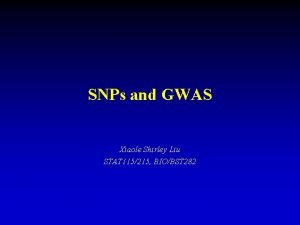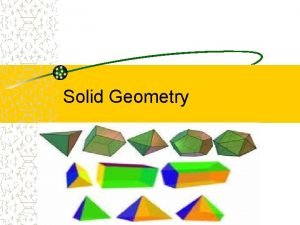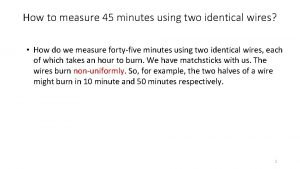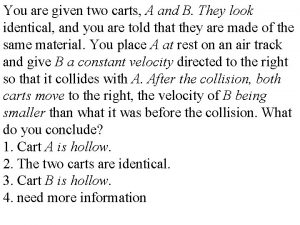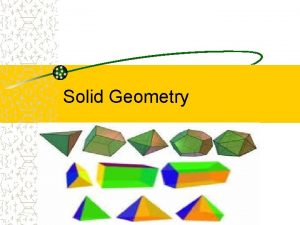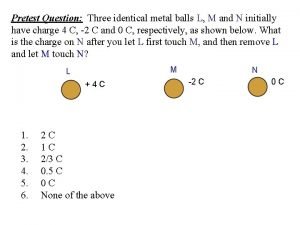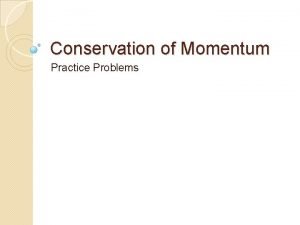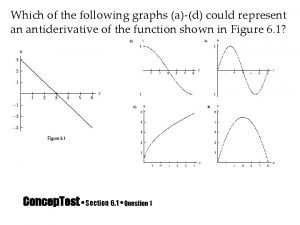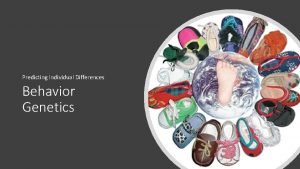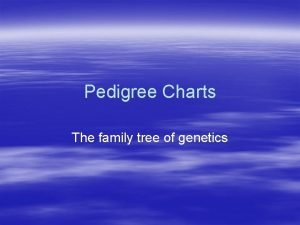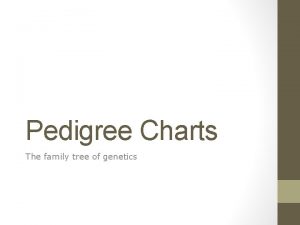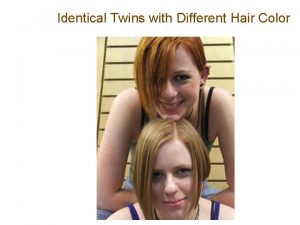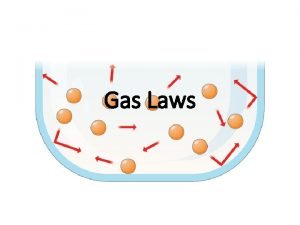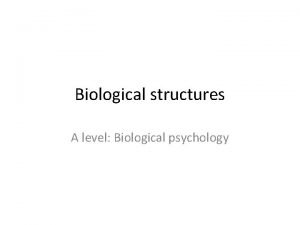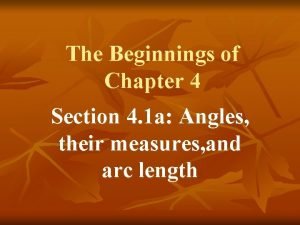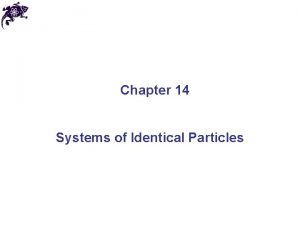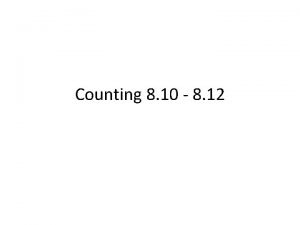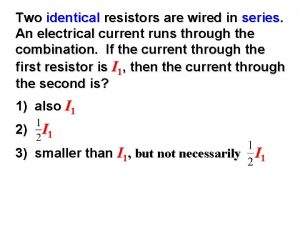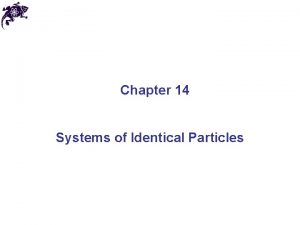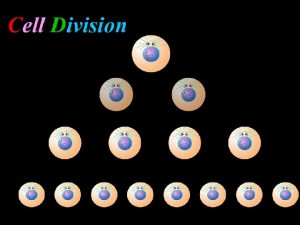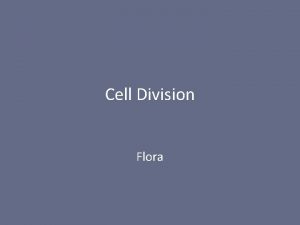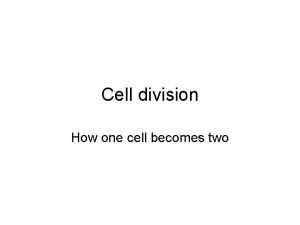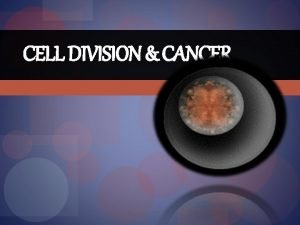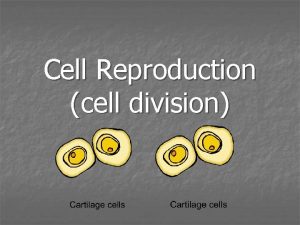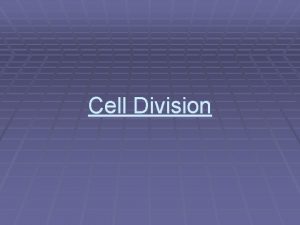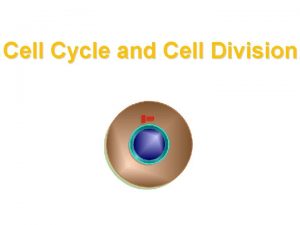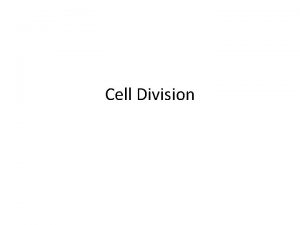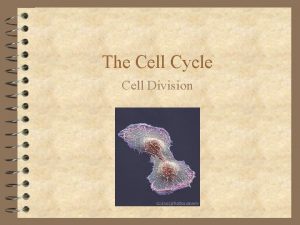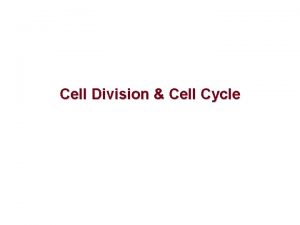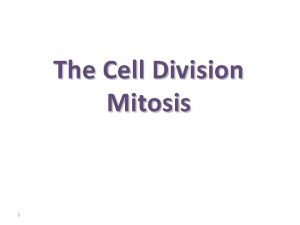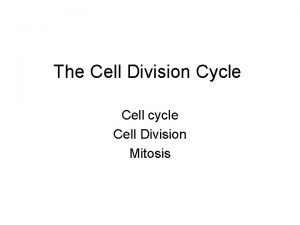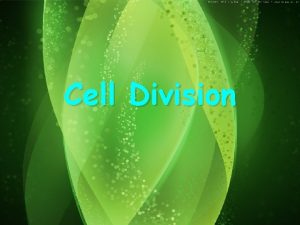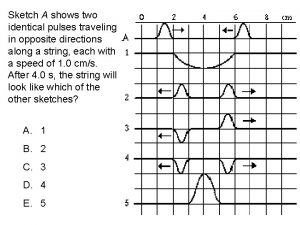CELL DIVISION Cell Division One cell Two identical

















































- Slides: 49

CELL DIVISION

Cell Division Ø One cell Two identical cells Ø Cells must be able to pass on ALL information from their DNA Ø So DNA must be replicated before cell division occurs

Prokaryotic Cells Ø No nucleus Ø DNA is found as circular molecule Ø BINARY FISSION DNA replicates l DNA attaches to membrane l Cell pinches & splits l

Eukaryotic Cells Ø Much more complicated Ø Chromosome – DNA coiled around proteins

Formation of chromosomes Ø DNA at “rest” found unorganized in nucleus Ø Just before cell division, it organizes itself into chromosomes

Human Chromosomes

Parts of a Chromosome

UNDERSTANDING CHECK


How many do humans have? Ø Somatic cells = DIPLOID (2 n) 46 chromosomes (23 pairs) l 22 pairs = Autosomes l 1 pair = Sex chromosomes (X & Y) l XX (female) vs. XY (male) l

Human Karyotype

Human Karyotype

UNDERSTANDING CHECK

How many do humans have? Ø Gametes = HAPLOID (n) Formed from germ cells l 23 chromosomes (one of each) l Sperm + Egg = Zygote YOU! l 23 + 23 = 46 l

Haploid + Haploid = Diploid

Cell Cycle

Ø G 1 – 1 st Cell Cycle Growth – Routine functions Ø S – Synthesis – DNA Replication Ø G 2 – 2 nd Growth – Prepare to Divide Ø M – Mitosis – Division of the Nucleus Ø C – Cytokinesis – Division of the Cytoplasm Ø MOVIE

UNDERSTANDING CHECK

Cell Cycle Ø Numerous ways to control speed Ø Malfunction of cell cycle = cancer

Interphase Ø Includes the G 1, S, & G 2 phases Ø When the cell is not dividing or “at rest” Ø DNA is found unorganized in the nucleus

Interphase

Mitosis Ø Division of the nucleus to form 2 identical nuclei Ø Chromosome = 2 identical chromatids (formed after replication)

UNDERSTANDING CHECK

Mitosis Ø Prophase Ø Metaphase Ø Anaphase Ø Telophase Ø MOVIE 1 Ø MOVIE 2

Prophase Ø Chromosomes become visible Ø Nuclear envelope dissolves Ø Spindle forms from centrioles

Prophase

Metaphase Ø Chromosomes line up along equator

Anaphase Ø Chromatids separate and reeled to opposite poles

Telophase Ø Nuclear envelope forms at each pole Ø Chromosomes uncoil Ø Spindle dissolves Ø Cytokinesis begins

Telophase

UNDERSTANDING CHECK

Cytokinesis Ø Division of the cytoplasm Ø Animal cells – pinch and split Ø Plant cells – forms cell plate down the center Ø MOVIE

Meiosis Ø Formation of haploid gametes from one germ cell Ø Homologous chromosomes – chromosomes of similar size, shape, & genetic content

Meiosis Ø Meiosis I Prophase I l Metaphase I l Anaphase I l Telophase I l Ø Meiosis II Prophase II l Metaphase II l Anaphase II l Telophase II l

Prophase I Ø Homologous chromosomes pair up & crossing over occurs Ø Animation Ø Allows genetic variation

Prophase I Ø Chromosomes become visible Ø Nuclear env. breaks down Ø Spindle forms Ø Crossing over

Metaphase I Ø Pairs of homologous chromosomes move to equator of cell

Anaphase I Ø Homologous chromosomes reeled to opposite poles

Telophase I Ø Chromosomes gather at poles Ø Cytokinesis

Prophase II Ø New spindle forms

Metaphase II Ø Chromosomes line up on equator

Anaphase II Ø Chromatids reeled to opposite poles

Telophase II Ø Nuclear envelope forms Ø Cytokinesis

Meiosis

UNDERSTANDING CHECK

What can go wrong? Ø Nondisjunction – the chromosomes fail to separate during meiosis Ø Trisomy – individual has 3 of a particular chromosome Ø Down syndrome = trisomy 21

UNDERSTANDING CHECK

Meiosis in Males

Meiosis in Females
 Identical by descent vs identical by state
Identical by descent vs identical by state Structure of twelfth night
Structure of twelfth night Solid
Solid Measure 45 minutes using 2 wires
Measure 45 minutes using 2 wires You are given two carts a and b. they look identical
You are given two carts a and b. they look identical Placement of diacritics is examining
Placement of diacritics is examining Four t's are made from two identical rods
Four t's are made from two identical rods A solid object with two identical ends and flat sides
A solid object with two identical ends and flat sides 3 identical metal balls
3 identical metal balls Two cans of spam with identical masses collide
Two cans of spam with identical masses collide Cell cycle and cell division
Cell cycle and cell division Cell cycle and cell division
Cell cycle and cell division Cell cycle phases
Cell cycle phases One god one empire one religion
One god one empire one religion One one little dog run
One one little dog run One king one law one faith
One king one law one faith One god one empire one emperor
One god one empire one emperor One ford behaviors
One ford behaviors See one do one teach one
See one do one teach one One price policy
One price policy See one do one teach one
See one do one teach one Asean tourism strategic plan
Asean tourism strategic plan One vision one identity one community
One vision one identity one community Two mothers one on one
Two mothers one on one Long division and short division
Long division and short division Long division rational functions
Long division rational functions Long division vocabulary
Long division vocabulary Synthetic dicision
Synthetic dicision Which of the following graphs are identical?
Which of the following graphs are identical? Pop thats their warmup
Pop thats their warmup Genotype environment
Genotype environment Identical vs fraternal twins
Identical vs fraternal twins I wandered lonely as a cloud meter
I wandered lonely as a cloud meter Pedigree fraternal twins
Pedigree fraternal twins Pedigree chart
Pedigree chart What is nurture in psychology
What is nurture in psychology Identical rhyme examples
Identical rhyme examples Twins with different hair colors
Twins with different hair colors Represented above are five identical balloons
Represented above are five identical balloons Rita and holly are identical twins
Rita and holly are identical twins It takes ten identical pieces to form
It takes ten identical pieces to form Similar sire similar scion
Similar sire similar scion Identical system
Identical system Distribution of n identical objects
Distribution of n identical objects Identical objects into distinct bins
Identical objects into distinct bins A pattern is made from four identical squares
A pattern is made from four identical squares Rita and holly are identical twins
Rita and holly are identical twins Envoyer past participle
Envoyer past participle Identical resistors
Identical resistors The diagram shows 3 identical circles inside a rectangle
The diagram shows 3 identical circles inside a rectangle
